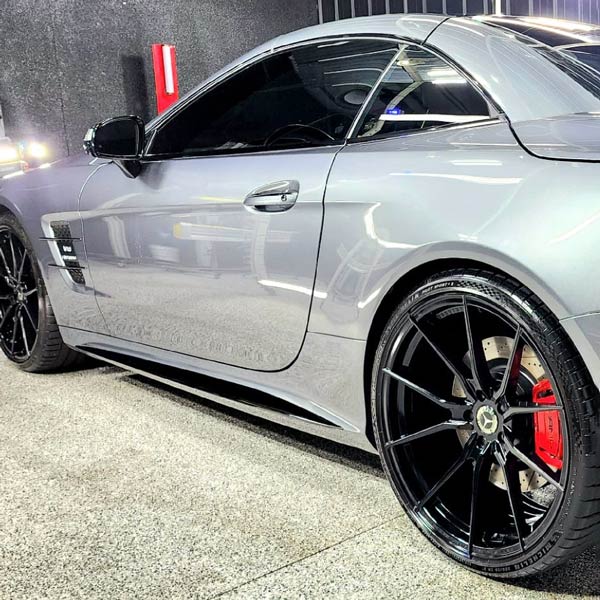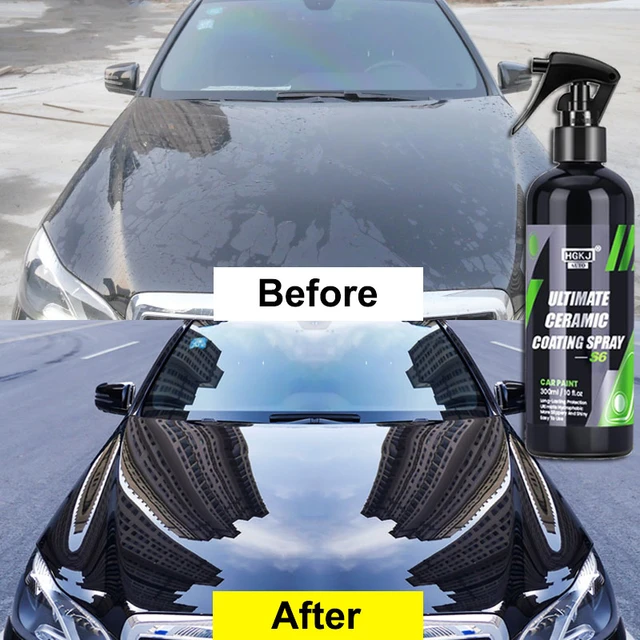Sustainable ceramic coating options for responsible car care.
Sustainable ceramic coating options for responsible car care.
Blog Article
Just How Ceramic Coating Secures Your Vehicle's Paint and Keeps It Looking New
Ceramic layer has actually emerged as a popular service for vehicle paint security, using a durable protection versus a selection of ecological hazards. The details of just how this modern technology operates and its benefits over typical methods call for a closer examination, disclosing compelling factors to consider this cutting-edge approach for your car.
What Is Ceramic Layer?
Ceramic layer is regularly regarded as a revolutionary development in vehicle paint protection. ceramic coating. This sophisticated item is a liquid polymer that chemically bonds with the vehicle's manufacturing facility paint, developing a safety layer that boosts durability and visual allure. Unlike standard wax or sealants, which provide only short-lived defense, ceramic coverings offer lasting outcomes, typically spanning numerous years with appropriate maintenance
The key components of ceramic coatings are silicon dioxide (SiO2) and titanium dioxide (TiO2), which add to their hydrophobic properties. This hydrophobic nature enables water to bead and roll off the surface area, efficiently protecting against pollutants like dirt, crud, and bird droppings from adhering to the paint. Subsequently, automobiles treated with ceramic coverings call for less constant washing and are much easier to preserve.
Additionally, ceramic layers provide UV security, which aids avoid oxidation and fading of the paint as a result of sun exposure. This facet not only preserves the auto's visual appeal but likewise adds to its resale value with time. In general, ceramic layers represent a considerable leap ahead in the world of auto care, supplying a robust service for automobile proprietors seeking to protect their investment.
How Ceramic Finish Functions
How does the process of ceramic finish develop a formidable barrier versus environmental risks? Ceramic finishing is composed of a fluid polymer that chemically bonds with the factory paint of a car. This bond develops a safety layer that is both hydrophobic and sturdy. The main element of ceramic coatings is silica dioxide (SiO ₂), which offers exceptional firmness and durability versus scrapes, UV rays, and various other outside contaminants.
When used appropriately, the layer passes through the microscopic pores of the paint surface area, developing a semi-permanent bond. This causes a smooth, shiny surface that improves the vehicle's visual allure while at the same time repelling water, dust, and gunk. The hydrophobic nature of the covering makes sure that contaminants glide off conveniently, decreasing the regularity of cleaning and the probability of scratches throughout cleansing.

Advantages of Ceramic Layer
The application of ceramic coating provides various advantages that substantially improve the security and appearance of an automobile's paint. Continue One of the primary benefits is its capability to create a robust, hydrophobic layer that wards off water, dirt, and other contaminants. This home not only keeps the surface area cleaner for longer durations however likewise makes washing the car much easier and less labor-intensive.
Additionally, ceramic coatings provide premium security against dangerous UV rays, which can result in oxidation and fading gradually. ceramic coating. This UV resistance helps maintain the initial color and gloss of the vehicle's paint, therefore protecting its aesthetic appeal for several years
Moreover, ceramic finishings are chemically resistant, using security versus acidic pollutants such as bird droppings, tree sap, and road crud. This resistance aids stop etching and staining, which can endanger the integrity of the paint.
Lastly, the durability of ceramic finishes extends past conventional waxes and sealers, often long-term a number of years with correct maintenance. This durable protection inevitably translates right into cost savings, as automobile owners can minimize the regularity of reapplication and maintenance initiatives. Overall, ceramic finishes represent a substantial investment in automobile care.
Comparing Ceramic Finishing to Typical Methods
Typically overlooked in the pursuit for optimum car protection, the contrast in between ceramic covering and conventional approaches such as shaving and sealants reveals considerable distinctions in durability, performance, and upkeep. Typical waxes usually give a short-lived protective layer, typically lasting just a couple of weeks to a pair of months, while sealants can extend this period to numerous months. On the other hand, ceramic coverings provide a robust, lasting shield that can withstand for a number of years when appropriately used.
In regards to performance, ceramic coatings exhibit exceptional hydrophobic residential or commercial properties, efficiently driving away water and impurities, which protects against dust and crud from sticking to the surface area. This residential property not just improves the automobile's appearance but also simplifies the cleansing procedure. like this Standard waxes and sealers, while they might use some water resistance, do not match the level of protection provided by ceramic finishings.
The maintenance regime for both options deviates dramatically. While typical approaches call for regular reapplication and upkeep, ceramic coverings are designed to hold up against the roughness of everyday driving with minimal treatment, making them a much more effective option for auto fanatics seeking long-term defense. Eventually, the choice in between ceramic finish and conventional methods depends upon the preferred degree of security and maintenance dedication.
Maintenance Tips for Porcelain Coated Cars
Preserving a ceramic coated car calls for a calculated approach to make certain the durability of the safety layer. Primarily, normal washing is essential. Use a pH-neutral hair shampoo and microfiber clean mitts to protect against scraping the finishing while effectively eliminating dust and impurities. Goal to clean your car every 2 weeks, or more often in rough conditions.
Additionally, stay clear of automated automobile cleans that make use of brushes, as these can jeopardize the honesty of the ceramic coating. Instead, choose a touchless laundry or a hand clean. After cleaning, drying out is critical; use a high-quality microfiber towel to stop water places.
Using a ceramic-specific maintenance spray can enhance the covering's hydrophobic properties and add an extra layer of protection. This should be done periodically, depending on your driving conditions.

Verdict
To conclude, ceramic layer offers as an efficient protective action for vehicle paint, providing a durable barrier versus environmental damages and boosting the car's visual charm. Its distinct residential or commercial properties, consisting of hydrophobicity and UV security, contribute to durable luster and cleanliness. Contrasted to conventional methods, ceramic layers present superior performance and longevity, eventually read this article reducing upkeep efforts. Embracing ceramic finishing technology can substantially expand the lifespan of a vehicle's outside, ensuring it remains visually enticing and well-protected.
Report this page